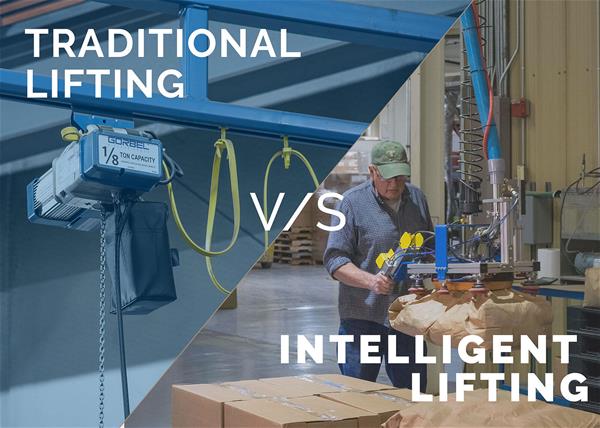
Increase Speed on the Production, Assembly, and Distribution Line
Intelligent Lifting Devices (ILDs) move as fast as the operator wants them to move. That means workers are able to move even heavy, awkward items much faster than before. Since the speed is variable, ILDs are also great for operations where workers need to move quickly at some points and slower at others. The Lift Assist Device empowers the worker to increase their pace and provide greater efficiencies on the line.
Users can also program some Lift Assist Devices to return automatically to the start position. This eliminates the time the user would need to spend putting the tool back "home" after each use. They can instead focus their attention on the next task while the ILDs readies itself for its next use. That can eliminate wasted time on the job and vastly speed up production times.
Improved Ergonomics in the Workplace for the User
ILDs act as a natural extension of the worker's arms and hands. The devices seamlessly integrate into the workstation, providing a safer way for the worker to do their job. Improved ergonomics translate to higher production numbers with fewer accidents and injuries.
The devices also offer automatic weight compensation. If users need to pick up items in a variety of weight classes, the Intelligent Lift Assist Device will automatically adjust to compensate for the weight. That means users get the same benefits no matter how much weight they are lifting and there is no need to stop and reprogram the device.
Easy to Train Workers on Their Use
Because ILDs are ergonomic in nature and respond to the user's intent, training on the devices takes only minutes. Users will be able to put the new machinery to work almost immediately. That means there is little downtime for training and managers see improvements to productivity right away.
Quick training times give ILDs another operational efficiency advantage: worker acceptance. Because of their seamless integration into the work station and ease of use, workers are far more likely to put ILDs to work than traditional lifting devices. That means capital invested in the systems won't go to waste. If workers decide they don't like to use a lifting device, they put themselves at greater risk of injury by working around it. Not only is it a waste of time and resources, but unused lifting equipment can also result in more downtime. Worker acceptance of Lift Assist Devices is high and a key to their success in the materials handling industry.
Reduced Risk When Moving Delicate Products
The computer sensors inside the ILDs provide precise, controlled movement. That helps the user guide delicate machinery into place, even if it's heavy or awkward. The controlled movements and variable speeds mean workers can move as slowly as needed to get products into place. This gives a big advantage when it comes to positioning delicate machinery.
Controlled movements mean there is less risk of user error and accidental damage to materials. It's human error that's responsible for most of the damage that happens in production or during pick and pack. An automation hybrid like an ILD helps reduce that risk. Lower shrinkage means a healthier bottom line.
Help Lower the Incidence of Injury from Strain and Repetitive Motion
Repetition and strain injuries are two of the most common causes of worker injury in the materials handling environment. ILDs can greatly reduce the risk for workers, giving them the means of performing difficult tasks safely. That means fewer worker's compensation claims, fewer sick days, and higher productivity (not to mention happier, safer workers).
Intelligent Lift Assist Devices help to reduce the risk of strain by compensating for the weight of the item. Assembly Magazine notes that Gorbel's G-Force Lift Assist Device makes a 150-pound load feel like three pounds. That means users don't need to stress their musculoskeletal system to get heavy loads moved into place.